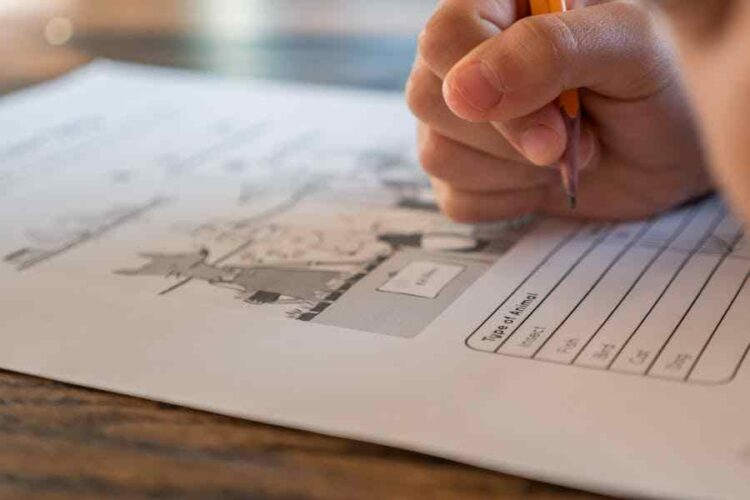Navigating lease agreements can often seem daunting, especially when deciphering roles like “Who is the Lessor and Lessee?” In any leasing contract, these are the two primary roles that you need to understand thoroughly to ensure a seamless transaction. The lessor, typically the property owner, grants possession and use of their property to another party.
Conversely, the lessee is the tenant or user who acquires these rights under the lease’s terms. This guide aims to demystify these terms using simple language, outline their responsibilities, and provide practical advice for both lessors and lessees to manage these roles effectively and legally. Understanding these key roles will help in making informed decisions and fostering a fair leasing arrangement.
Introduction To Lease Agreements
A lease agreement is a binding legal contract entered into between two parties: the lessor (the property owner/landlord) and the lessee (the tenant). This agreement grants the lessee the right to use the property owned by the lessor for a predetermined period in exchange for rent. Lease agreements are common in residential and commercial real estate and can also apply to personal property, such as vehicles and equipment.
1. Who Is The Lessor?
The lessor, simply put, is the owner of the property or asset being rented out. They may be individual property owners, real estate investors, or companies that manage multiple rental units. The lessor is responsible for providing a property that is in good condition and fit for the purpose intended by the lease.
Responsibilities of the Lessor:
- Property Maintenance: Ensuring the property is in excellent condition at the start of the lease and managing any necessary repairs or maintenance issues that arise, unless the lease specifies otherwise.
- Legal Compliance: Guaranteeing the property meets all local, state, and federal regulations, which includes obtaining necessary licenses and inspections.
- Respecting Tenant Privacy: Adhering to laws regarding tenant privacy, ensuring they give proper notice before entering the rented property.
2. Who Is The Lessee?
The lessee is the individual or entity that rents the property from the lessor. Commonly referred to as the tenant, the lessee gains the right to use the property in accordance with the terms of the lease agreement.
Responsibilities of the Lessee:
- Timely Rent Payments: Paying the agreed-upon rent at the specified intervals throughout the duration of the lease.
- Property Upkeep: Maintaining the cleanliness and overall condition of the property, taking responsibility for damages caused by negligence or misuse.
- Adhering to Lease Terms: Following all terms specified in the lease, which may include rules about pets, modifications to the property, or subletting.
3. Key Elements Of A Lease Agreement
Understanding the terms of the lease agreement is crucial for both the lessor and lessee:
- Duration: Most leases specify the length of the rental period, from short-term leases (a few months) to long-term leases (several years).
- Rent: The amount of rent, due dates, and acceptable payment methods should be clearly defined.
- Security Deposit: Often required to cover potential damages, the conditions for refunding the security deposit should be specified.
- Property Description: A detailed description of the property being leased, including its condition, furnishings provided, and any defects known at the time of leasing.
- Legal Clauses: Clauses covering permissible property uses, renewal terms, and termination conditions.
4. Understanding Legal Responsibilities
Both parties must understand their legal responsibilities to protect their interests:
Lessor’s Legal Duties:
- Comply with the warranty of habitability, ensuring the property is livable and meets health and safety standards.
- Follow anti-discrimination laws when selecting tenants.
- Prepare and execute the lease agreement in accordance with the law.
Lessee’s Legal Duties:
- Use the property only in the ways agreed upon in the lease.
- Avoid engaging in illegal activities on the premises.
- Respect the terms of the lease regarding guests and public conduct.
5. Navigating Through Common Lease Disputes
Disputes are not uncommon in rental relationships, but they can often be resolved through communication and legal guidance:
- Maintenance and Repairs: Disagreements over who is responsible for damages or repairs are common.
- Security Deposit Returns: Issues concerning deductions from security deposits for repairs or cleaning.
- Evictions: Legal processes involved if the lessee violates the lease terms.
6. Tips For A Successful Leasing Experience
Here are some straightforward tips to ensure a successful leasing experience, whether you’re a landlord or a tenant:
- Understand Your Lease Agreement:
- Read Carefully: Go through all the terms and conditions before signing to understand your rights and responsibilities.
- Ask Questions: If anything is unclear, ask questions to avoid any misunderstandings later.
- Communication is Key:
- Keep in Touch: Maintain open lines of communication with your tenant or landlord. This helps in resolving issues swiftly and amicably.
- Document Everything: Keep records of all agreements, notices, and conversations related to the lease.
- Inspect the Property:
- Initial and Routine Checks: Before moving in, inspect the property for any issues that need fixing. Regular inspections thereafter can help catch problems before they worsen.
- Respect Privacy and Boundaries:
- Notice Before Entry: Landlords should always provide notice before entering the tenant’s space, respecting their privacy.
- Plan for the Future:
- Renewal Options: Discuss lease renewal options early. If you’re a tenant and you like the space, consider negotiating a longer-term lease.
- Legal Compliance:
- Follow the Law: Both parties should ensure they are compliant with local housing laws and regulations to avoid legal troubles.
- Be Proactive About Maintenance:
- Report and Repair: Tenants should report issues promptly, and landlords should make repairs in a timely manner.
By following these tips, both tenants and landlords can contribute to a smooth and positive leasing experience.
Conclusion
In conclusion, understanding “Who is the Lessor and Lessee?” is fundamental for anyone involved in leasing property. The lessor, or property owner, and the lessee, or tenant, each have specific roles and responsibilities that are crucial for the smooth functioning of a lease agreement. By clearly defining these roles, both parties can ensure legal compliance and avoid potential disputes. Whether you are renting a commercial space, a residential property, or leasing equipment, knowing these key terms enhances your ability to negotiate terms and manage the lease effectively. Always remember, a well-informed lessor and lessee relationship not only protects individual rights but also builds a foundation for successful and harmonious rental experiences.
FAQ’s
Is the lessor the owner?
Yes, the lessor is typically the owner of the property. They hold legal title and rights to lease it to a lessee (tenant) under agreed terms and conditions for a specified period.
What is an example of a lessee and lessor?
An example of a lessee and lessor relationship is a tenant renting an apartment (lessee) from a property company (lessor). The company owns the apartment and leases it out for monthly rent.
What is an example of a lessor?
A common example of a lessor is a commercial real estate firm that leases office spaces to businesses. The firm owns the properties and makes them available for businesses to rent under specified lease agreements.










